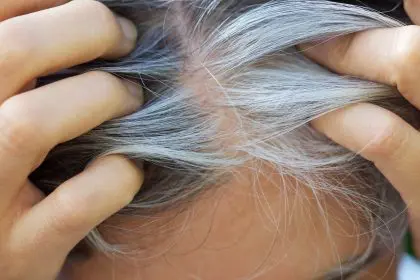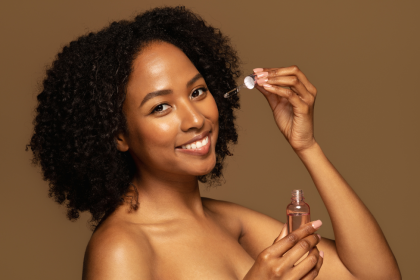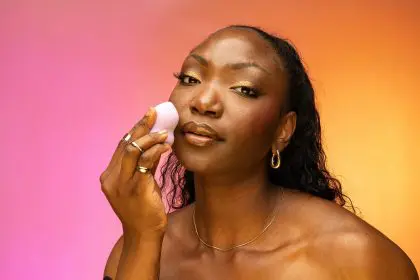Your skin is getting bombarded by ultraviolet radiation every time you step outside, and while you’re busy slathering on chemical sunscreens, nature has been quietly developing its own sun protection strategies for millions of years. Some plants have evolved incredible natural compounds that act like built-in SPF, and many of these botanical sunblocks are probably sitting in your kitchen right now.
These aren’t magical cure-alls that will replace your regular sunscreen, but they’re fascinating examples of how plants protect themselves from the same UV radiation that damages human skin. The compounds that help a tomato plant survive blazing summer sun or allow a coconut palm to thrive on tropical beaches can actually provide meaningful sun protection when used properly.
The most intriguing part is that many of these natural sun protectors work differently than conventional sunscreens. Instead of just blocking UV rays, they often provide antioxidant protection that helps repair damage and strengthen your skin’s natural defenses against future sun exposure.
Why plants became nature’s sunscreen chemists
Plants can’t run for shade when the sun gets too intense, so they’ve had to develop sophisticated chemical defense systems to survive constant UV bombardment. The same compounds that give fruits and vegetables their vibrant colors often double as natural sun protection agents, absorbing harmful radiation before it can damage plant tissues.
These plant compounds work through multiple mechanisms that go beyond simple UV blocking. Some absorb specific wavelengths of harmful radiation, others neutralize the free radicals that UV exposure creates, and many actually help repair cellular damage after it occurs. It’s like having a comprehensive sun protection system instead of just a basic shield.
The concentration of these protective compounds often increases in plants that grow in high-UV environments. Desert plants, tropical fruits, and high-altitude herbs tend to be packed with natural sun protection molecules because they’ve had to adapt to extreme solar conditions to survive.
What makes these natural compounds particularly interesting is that they’re often water-soluble and can be absorbed by human skin, potentially providing internal and external protection simultaneously. When you eat UV-protective foods or apply plant extracts topically, you’re essentially borrowing the sun protection strategies that plants have perfected over evolutionary time.
The red spice that doubles as natural sunblock
Red palm oil contains one of the highest concentrations of natural SPF compounds found in any plant source, with an estimated sun protection factor of around 8. This deep orange-red oil gets its color from incredibly high levels of carotenoids, the same compounds that help protect plant cells from UV damage.
The carotenoids in red palm oil work by absorbing blue light and UV radiation before it can penetrate deeper into skin tissues. These compounds essentially act like microscopic umbrellas, intercepting harmful rays and converting them into harmless heat. The protection isn’t as strong as commercial sunscreens, but it’s significant enough to provide meaningful defense during brief sun exposure.
Red palm oil also provides antioxidant protection that helps neutralize the free radicals created by UV exposure. This means it’s not just blocking some radiation, but also helping to repair the oxidative damage that occurs when UV rays do get through your skin’s defenses.
The oil absorbs quickly into skin and doesn’t leave the greasy residue that many commercial sunscreens do. However, it will give your skin a slight orange tint, which some people find appealing as a subtle bronzing effect while others might find it undesirable.
The kitchen herbs secretly fighting UV damage
Turmeric contains curcumin, a powerful compound that provides both anti-inflammatory and UV-protective benefits. When applied topically, turmeric can help prevent some of the cellular damage that UV exposure causes while also reducing the inflammation that leads to sunburn and premature aging.
The sun protection from turmeric isn’t just about blocking rays, it’s about helping your skin cells resist and recover from UV stress. Regular use of turmeric-based preparations may actually help build your skin’s tolerance to sun exposure over time, though this doesn’t mean you can skip proper sun protection.
Rosemary extract contains rosmarinic acid and other compounds that have been shown to absorb UV radiation and provide antioxidant protection. Some commercial sunscreens now include rosemary extract as a natural preservative and UV booster, recognizing its legitimate protective properties.
Aloe vera, while not technically an herb, contains compounds that absorb UV radiation in addition to its well-known soothing properties. Fresh aloe gel provides mild sun protection while also helping to heal existing sun damage, making it useful both before and after sun exposure.
The coconut oil controversy that misses the point
Coconut oil has an estimated SPF of around 4-8, which is minimal but not insignificant for very brief sun exposure or as a base layer under stronger protection. The controversy around coconut oil as sunscreen stems from people trying to use it as their sole sun protection, which is definitely inadequate for prolonged exposure.
Where coconut oil shines is as a carrier for other natural UV-protective compounds and as a moisturizing base that helps maintain your skin’s barrier function. Healthy, well-moisturized skin is more resistant to UV damage than dry, compromised skin, so coconut oil’s moisturizing properties contribute to overall sun protection.
The medium-chain fatty acids in coconut oil also have anti-inflammatory properties that can help reduce the cellular stress caused by UV exposure. While this doesn’t prevent sunburn, it may help minimize some of the long-term damage that accumulates from repeated sun exposure.
Coconut oil works best when combined with other natural sun-protective ingredients rather than used alone. Think of it as a supporting player in a comprehensive natural sun protection routine rather than the star of the show.
Green tea’s surprising sun shield powers
Green tea contains polyphenols that provide significant protection against UV damage, both when consumed as a beverage and when applied topically. The most protective compound, EGCG, helps prevent the DNA damage that UV radiation causes and may even help reverse some existing sun damage.
Drinking green tea regularly can provide systemic sun protection that works from the inside out. The antioxidants circulate through your bloodstream and accumulate in skin tissues, where they help neutralize free radicals and support your skin’s natural repair processes.
Topical green tea applications, whether as cooled tea, extracts, or infused oils, can provide additional localized protection. Some people use cooled green tea as a facial toner or add strong green tea to bathwater for overall skin protection benefits.
The sun protection from green tea is cumulative, meaning regular use builds up protective compounds in your skin over time. This isn’t immediate protection like sunscreen, but rather a long-term strategy for building your skin’s resilience to UV damage.
The tropical oils with built-in SPF
Carrot seed oil has one of the highest natural SPF ratings among plant oils, with estimates ranging from 8-15 depending on processing and concentration. This oil is extracted from wild carrot seeds and contains compounds that specifically absorb UV radiation while providing deep moisturization.
The protection from carrot seed oil comes primarily from carotenoids and other light-absorbing compounds that give the oil its characteristic amber color. These same compounds are responsible for the orange color in carrots, but they’re much more concentrated in the seed oil.
Carrot seed oil works particularly well when combined with other natural sun-protective ingredients. Many people blend it with coconut oil, shea butter, or zinc oxide to create custom sun protection formulations that provide broader spectrum coverage.
Wheat germ oil contains natural vitamin E and other compounds that provide both UV protection and skin healing benefits. While its SPF is lower than carrot seed oil, it’s excellent for post-sun care and helping to repair UV damage that has already occurred.
The antioxidant foods that protect from within
Lycopene-rich foods like tomatoes, watermelon, and red peppers provide internal sun protection that works by accumulating protective compounds in your skin tissues. Regular consumption of these foods can actually make your skin more resistant to UV damage over time.
The protection from lycopene isn’t immediate, it takes several weeks of regular consumption to build up protective levels in your skin. But once established, this internal sun protection works 24/7 to help prevent and repair UV damage at the cellular level.
Dark berries contain anthocyanins and other compounds that provide similar internal sun protection. Blueberries, blackberries, and pomegranates are particularly rich in UV-protective antioxidants that help strengthen your skin’s natural defenses.
Leafy greens like spinach and kale contain lutein and other carotenoids that accumulate in skin tissues and provide protection against both UV radiation and blue light from digital devices. These foods essentially help build your skin’s natural sunscreen from the inside out.
How to safely harness plant-based sun protection
Natural sun protection works best as part of a comprehensive approach that includes proper clothing, shade-seeking behavior, and appropriate timing of sun exposure. These plant compounds can reduce your UV exposure and help your skin cope with the radiation it does receive, but they’re not substitutes for common sense sun safety.
The most effective approach combines internal and external plant-based protection. Eating UV-protective foods builds long-term skin resilience, while topical applications of natural oils and extracts provide immediate but modest protection for brief exposures.
For prolonged sun exposure, especially during peak UV hours, natural plant compounds work best when combined with mineral sunscreens or used as base layers under conventional protection. Think of them as boosting your overall sun protection strategy rather than replacing proven methods.
Regular use of natural sun-protective compounds can help your skin recover more quickly from UV exposure and may help prevent some of the cumulative damage that leads to premature aging and skin cancer risk.
Your garden pharmacy for sun protection
The plants growing in your yard or available at your local grocery store contain legitimate sun-protective compounds that have been scientifically validated. While these natural options won’t replace high-SPF sunscreens for beach days or extended outdoor activities, they offer a gentler, more sustainable approach to daily sun protection.
Understanding how plants protect themselves from UV damage opens up possibilities for incorporating these strategies into your own sun protection routine. Whether through diet, topical applications, or combination approaches, you can tap into millions of years of botanical sun protection evolution.
The key is recognizing these natural compounds for what they are, valuable additions to your sun protection toolkit that work best when used thoughtfully as part of a comprehensive approach to UV safety. Your skin deserves protection, and nature has been perfecting some surprisingly effective solutions that are worth exploring.















